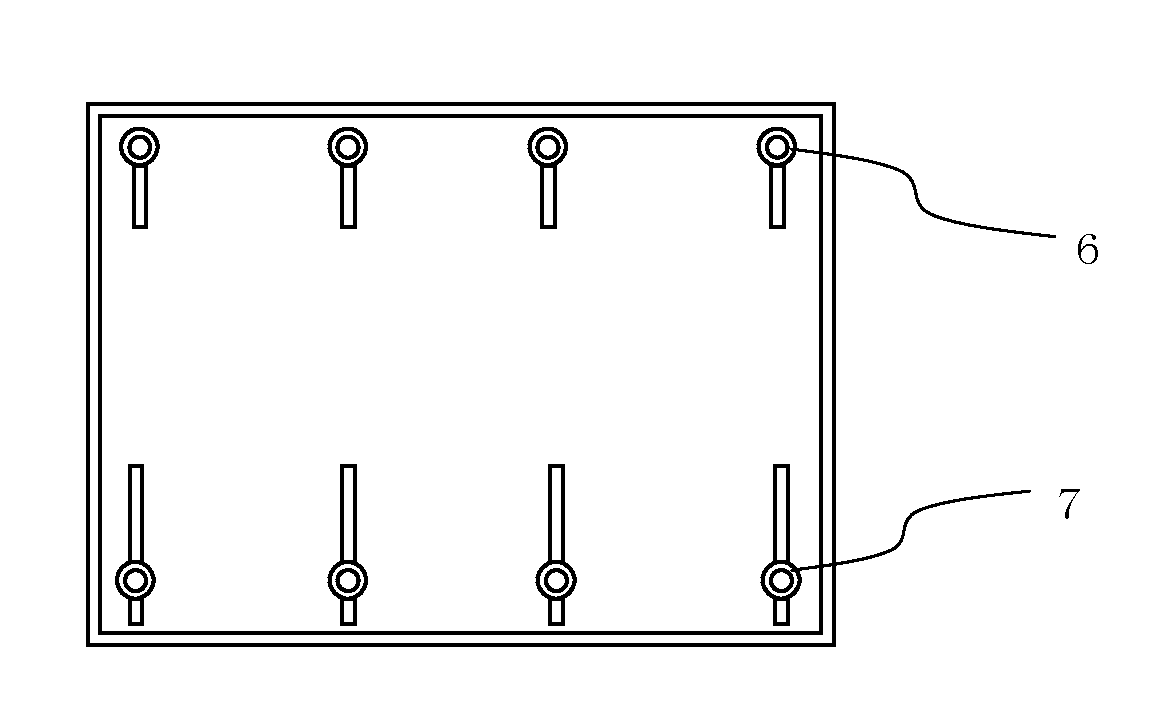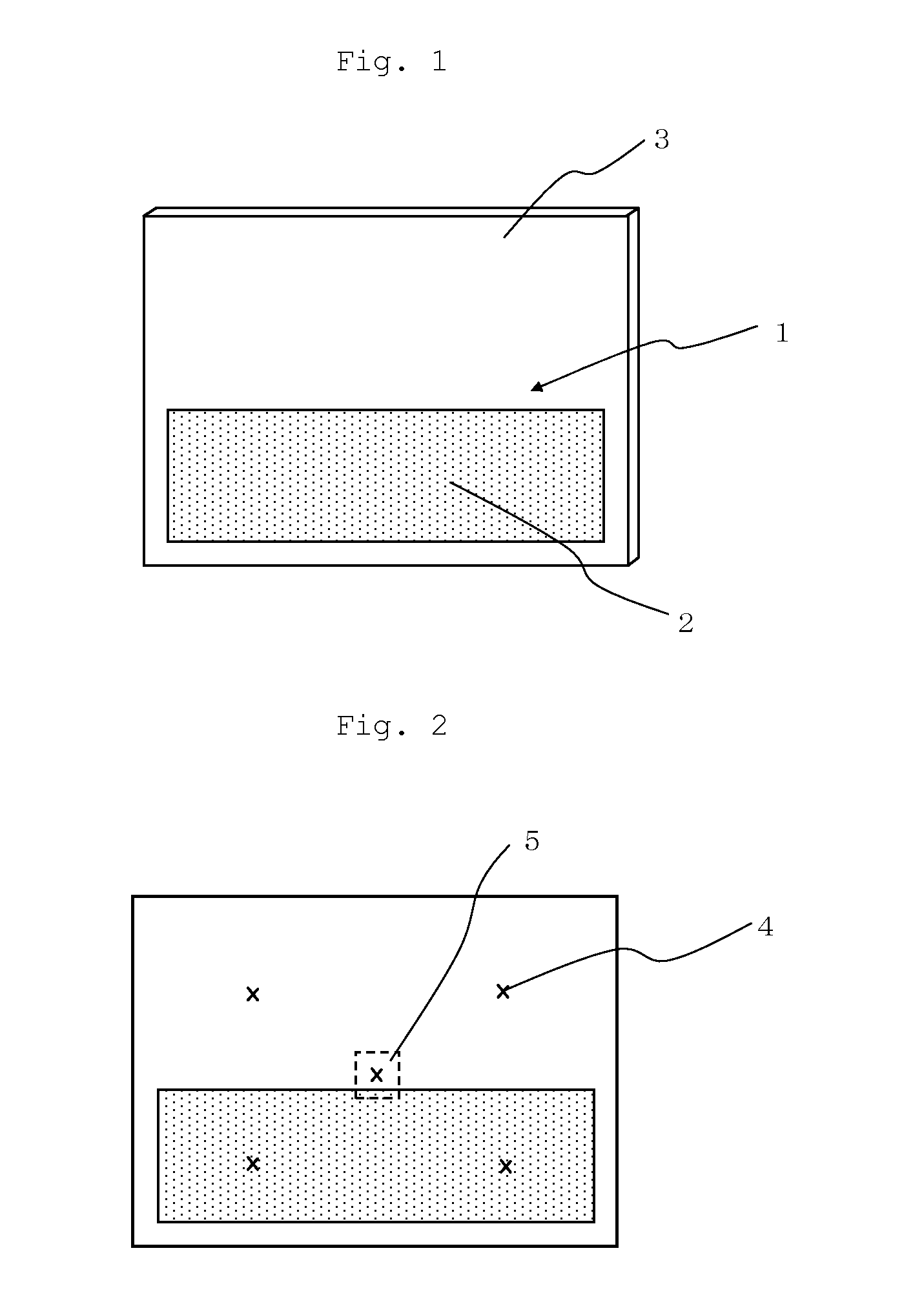Flame-retardant polycarbonate resin composition
a polycarbonate resin and flame retardant technology, applied in the direction of organic chemistry, group 5/15 element organic compounds, organic chemistry, etc., to achieve excellent flame retardancy, thermal stability, rigidity, transparency and moldability
- Summary
- Abstract
- Description
- Claims
- Application Information
AI Technical Summary
Benefits of technology
Problems solved by technology
Method used
Image
Examples
reference example 1
Production of Polycarbonate Resin
[0162]7,307 parts by weight (50 mol) of isosorbide and 10,709 parts by weight (50 mol) of diphenyl carbonate were charged into a reactor. 4.8 parts by weight (1×10−4 mol per mol of the diphenyl carbonate component) of tetramethylammonium hydroxide as a polymerization catalyst and 5.0×10−3 parts by weight (0.25×10−6 mol per mol of the diphenyl carbonate component) of sodium hydroxide were charged into the reactor. The charged materials were heated to 180° C. in a nitrogen atmosphere at normal pressure to be molten.
[0163]Under agitation, the pressure inside the reactor was gradually reduced for 30 minutes to 13.3×10−3 MPa, while produced phenol was being distilled off. In this state, the materials were allowed to react for 20 minutes and then heated to 200° C. Thereafter, the pressure inside the reactor was gradually reduced for 20 minutes, and the materials were allowed to react at 4.00×10−3 MPa for 20 minutes while phenol was being distilled off. The...
reference example 2
Production of Polycarbonate Resin
[0165]Pellets having a specific viscosity of 0.23 were obtained in the same manner as in Reference Example 1 except that the materials were eventually allowed to react at 255° C. and 6.66×10−5 MPa for 30 minutes. This pellet had a glass transition temperature (Tg) of 158° C. and a 5% weight reduction temperature (Td) of 353° C.
reference example 3
Production of Polycarbonate Resin
[0166]7,307 parts by weight (50 mol) of isosorbide, 10,923 parts by weight (51 mol) of diphenyl carbonate and 270 parts by weight (1.0 mol) of stearyl alcohol were charged into a reactor. 4.7 parts by weight (1×10−4 mol per mol of the diphenyl carbonate component) of tetramethylammonium hydroxide as a polymerization catalyst and 4.0×10−3 parts by weight (0.20×10−6 mol per mol of the diphenyl carbonate component) of sodium hydroxide were charged into the reactor. The charged materials were heated to 180° C. in a nitrogen atmosphere at normal pressure to be molten.
[0167]Under agitation, the pressure inside the reactor was gradually reduced for 30 minutes to 13.3×10−3 MPa, while produced phenol was being distilled off. In this state, the materials were allowed to react for 20 minutes and then heated to 200° C. Thereafter, the pressure inside the reactor was gradually reduced for 20 minutes, and the materials were allowed to react at 4.00×10−3 MPa for 20...
PUM
| Property | Measurement | Unit |
|---|---|---|
| thermal decomposition temperature | aaaaa | aaaaa |
| mol % | aaaaa | aaaaa |
| weight reduction temperature | aaaaa | aaaaa |
Abstract
Description
Claims
Application Information
 Login to View More
Login to View More - R&D
- Intellectual Property
- Life Sciences
- Materials
- Tech Scout
- Unparalleled Data Quality
- Higher Quality Content
- 60% Fewer Hallucinations
Browse by: Latest US Patents, China's latest patents, Technical Efficacy Thesaurus, Application Domain, Technology Topic, Popular Technical Reports.
© 2025 PatSnap. All rights reserved.Legal|Privacy policy|Modern Slavery Act Transparency Statement|Sitemap|About US| Contact US: help@patsnap.com



